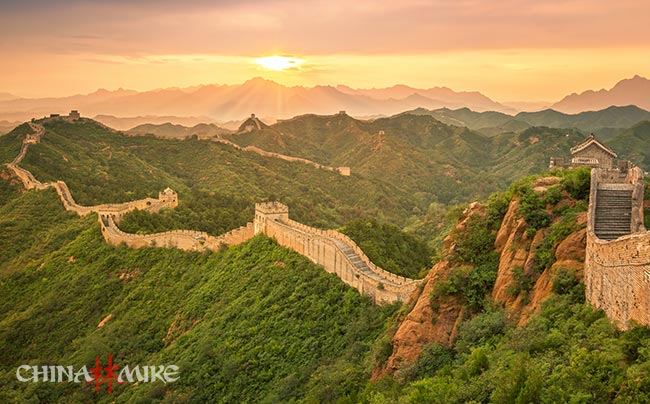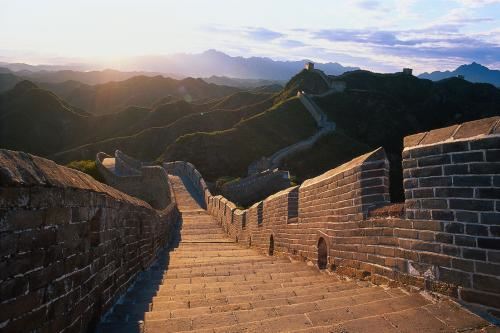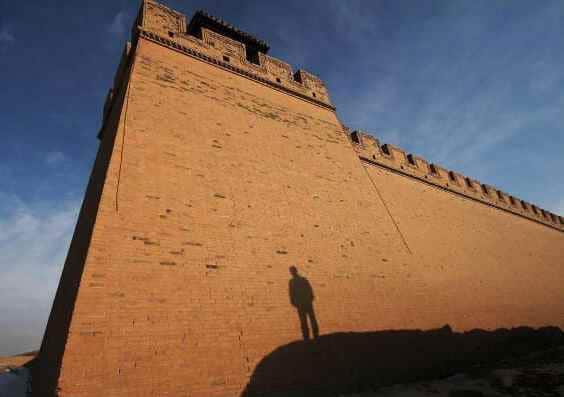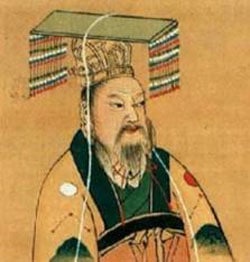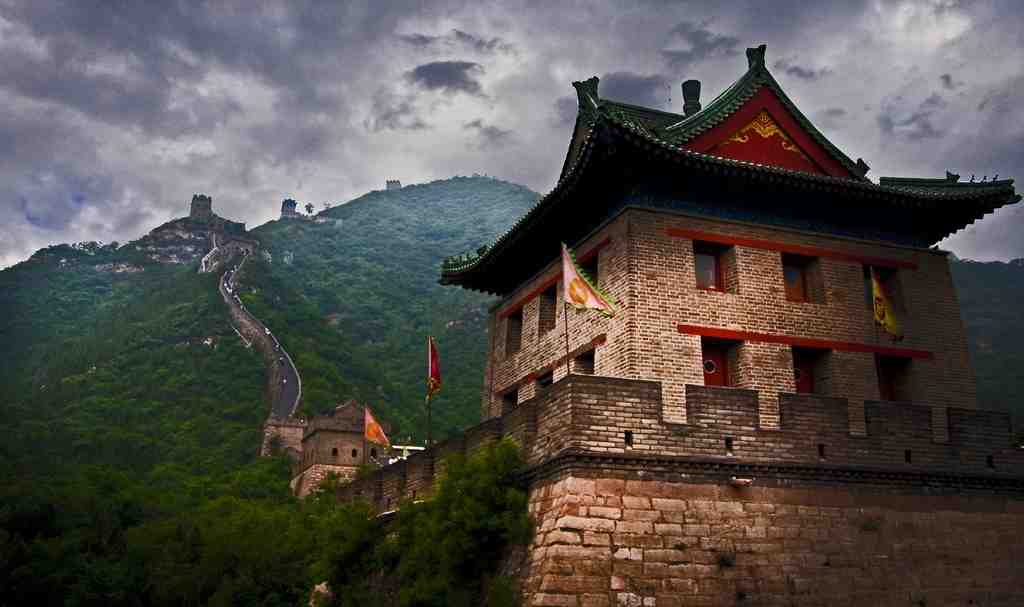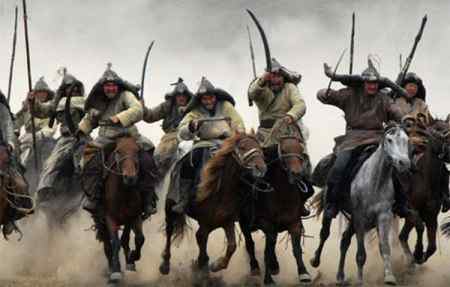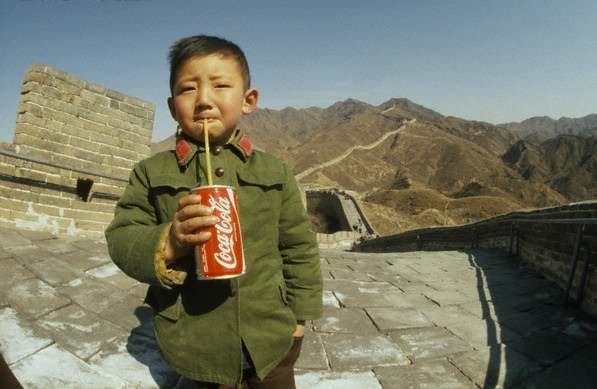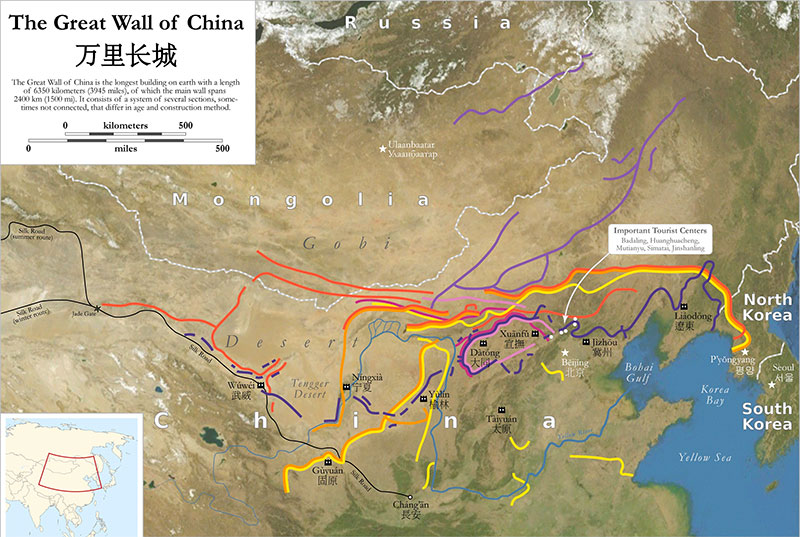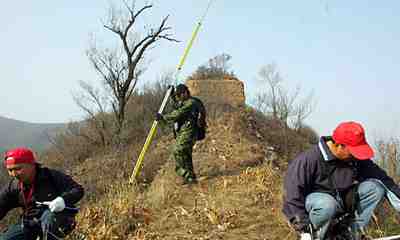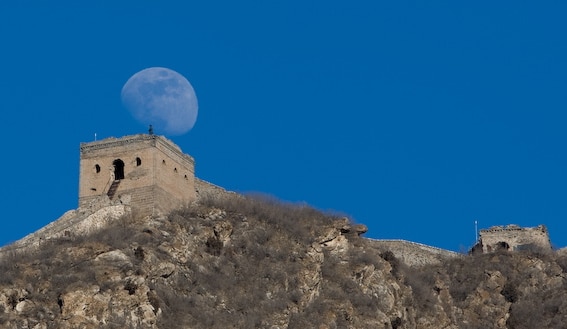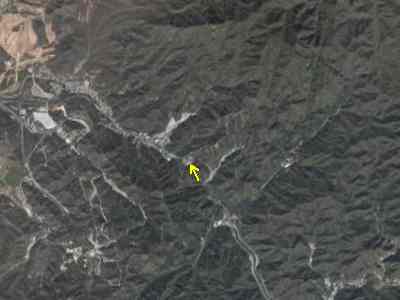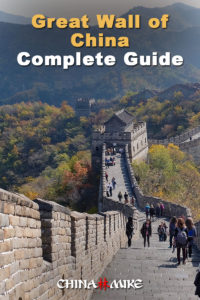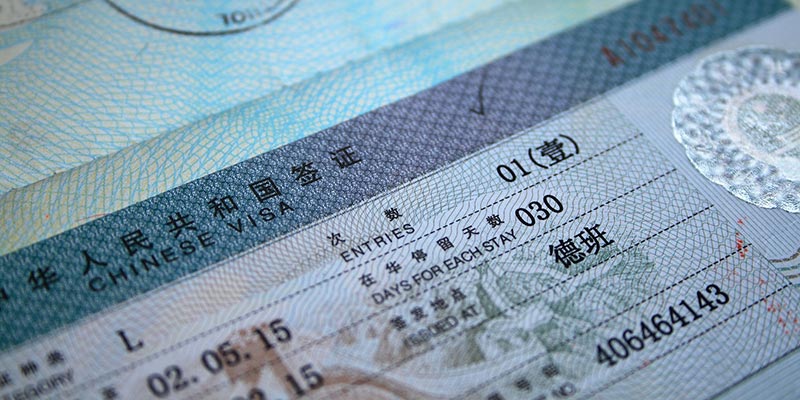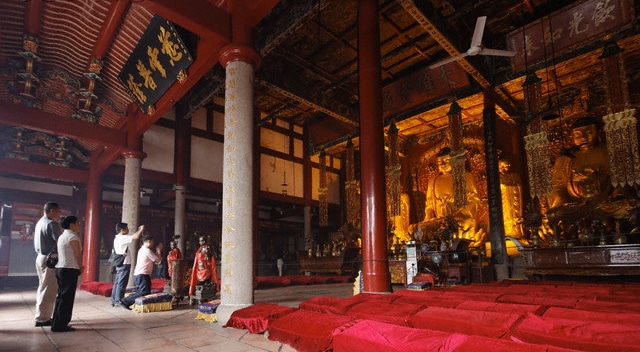Sure you’ve seen photos…but the only way to really appreciate the Great Wall of China is to stand on its walls and stare in awe as it snakes across the Gobi Desert and China’s placid mountains like a majestic ridge-backed dragon.
Through this Great Wall of China Guide, you will get a detailed intro to the Great Wall of China: some interesting facts including who built it, and why, and how, locations, maps, length, height, & more.
Built by a succession of imperial dynasties over the last two millennia, the network of fortifications and towers has evolved over the centuries—defining and defending the outer reaches of Chinese civilization.
During his famous visit to the Great Wall in 1972, Richard Nixon (in a Bush Jr–esque moment of eloquence) stated: “I think that you would have to conclude that this is a great wall.” And he was right—the Great Wall of China is undoubtedly one of the ancient world’s most amazing feats of engineering.
To the Chinese, the Great Wall is known as “Wan Li Chang Cheng” (万里长), or literally, “Long Wall of Ten Thousand Li” (“li” is a measure of distance about 500m or about a third of a mile). But of course, that’s not the actual length of the wall, but just an ancient way of saying “this is a long friggin’ wall.”
And although the Great Wall is undisputedly the longest man-made structure ever built, its exact total length continues to be debated since the Great Wall of China is not a single, continuous wall as described by early Western historical accounts. Instead, it’s more accurately described as a patchwork of walls that evolved over the centuries—an overlapping maze of walls and towers that were built (or fell into disuse) by successive dynasties throughout Chinese history.
But one thing is clear: the Great Wall is one of – if not THE – iconic symbol of China, symbolizing the perseverance and diligence of the Chinese civilization. There simply aren’t many cultural landmarks on the earth that symbolize the sweep of a nation’s history more powerfully than the Wall.
On the other hand, a number of Chinese intellectuals have pointed to the Wall as a symbol of what’s wrong with China – that it’s too conservative, focused on past glory days, and tends to look inward rather than outward.
Similarly, others see it as symbolic of the long-time Chinese practice of trying to keep out foreign cultures and influence, rather than absorbing and learning from them.
In this complete guide to the Great Wall of China, I want to explore some of the most common questions about this iconic structure, walk through a brief history of how it was built (I’ve written a more extensive history of the Great Wall of China here if you’re interested) and explain the best way for you to visit the Great Wall for yourself.
Brief History of China’s Great Wall
Building large-scale defensive walls has a long history in China. Walls often surrounded an entire city to protect against marauding nomads and enemies.
One of the earliest walls dates way back to the Shang Dynasty (1600 – 1050 BC), which built a tall, earthen-wall that enclosed an area of three square kilometers around their capital.
To see some great examples of China’s more “modern” (but still ancient) surviving city walls, head to Nanjing or Xi’an.
Great Wall 1.0 | The Beginnings
The earliest pieces of the Great Wall were built as early as the 5th century BC, during the so-called Warring States Period, when rival states constructed fortifications to defend their borders and irrigated lands against their neighbors (as well as non-Chinese nomads from the north).
During this early evolution, the “Wall” was just a growing patchwork of walls used to separate rival territories. The Great Wall as a concept didn’t come into existence until the 3rd century BC, after the legendary Qin Shi Huang unified China in 221 BC—becoming the founder of the Empire and First Emperor of China.
In 215 BC, he started the gargantuan task of creating the Great Wall 1.0 to protect China from the horse-riding nomadic “barbarians” to the north.
Of course, he personally didn’t lift a finger. But he had between 300,000-500,000 workers— mostly soldiers, prisoners, and unwilling peasants-turned-slaves—doing the dirty work. Though his dynasty was one of China’s shortest, his mark of Chinese history is indelible.
The infamously ruthless and iron-fisted First Emperor also left China with its second most famous tourist attraction: the Terracotta Army—his massive subterranean tomb filled with over 7,000 soldiers (and horses and chariots) to protect him in the afterlife.
In fact, his Great Wall project–along with other major development projects requiring massive labor–caused so much widespread suffering throughout the country that there were several (unsuccessful) assassination attempts on his life.
Great Wall 2.0 | Ming Dynasty Updates
Fast forward to the 15th and 16th centuries. The most impressive “modern” sections of the Great Wall were all constructed during the Ming Dynasty (1388-1644 CE).
The insular Ming emperors didn’t just fortify parts of the wall…we’re talking about over a 100-year effort to completely rebuild and reinforce the wall using modern brick and mortar construction (and you thought your kitchen renovation project was a never-ending money pit!).
These Ming Walls are the impressive, sturdy brick structures that have made the Great Wall of China a popular tourist destination. They stand at almost 25 feet (7m) high and almost as wide –they were designed so that 10 soldiers or 5 horses could ride side-by-side.
Strategically spaced about 300-500m apart, watchtowers sent signals down the line using smoke, gunpowder, and flags to quickly update leaders in Beijing on enemy movements (you’d think a Twitter feed would be quicker).
Was the Great Wall of China a Failure?
Despite decades of construction and countless lives lost (it’s also referred to as the world’s largest tombstone), the Great Wall never really effectively served its function as a supposedly impregnable line of defense.
Historians all over the world consider the Great Wall of China to have been “failure” as a defensive system, although not because of any inherent design flaws. Instead, it was the human factor— political infighting, corruption, cowardice —that proved to be the weak link throughout the history of the Wall.
During a six-decade campaign to invade China, the Mongols penetrated the Great Wall and besieged the capital of Yanjing (now Beijing) in 1215. Mongols were able to regularly find ways of going around sections or through the walls—often by bribing officials and guards.
Genghis Khan was alleged to have said, ‘The strength of a wall depends on the courage of those who defend it.” In 1279, the Mongols completed their takeover, becoming the first (but not last) non-Chinese group to rule the whole of China.
Even the impressive Ming Walls weren’t enough to protect China from being conquered by invaders again in the 17th century.
In 1644, the (non-Chinese) Manchurian army from the north marched to the Wall at the strategic pass called Shanhaiguan (the First Pass Under Heaven). Since the Ming dynasty was about to be overthrown by an internal rebellion, the Ming general in charge of the pass decided to ally with the Manchus and allowed them to pass through the Wall.
The Manchus did help defeat the rebels…but then took control, declared the Qing Dynasty, and ruled China for next two and a half centuries.
The Legacy of the Great Wall of China
For all the centuries of investment—and blood, sweat, and tears—the Great Wall at least provided some other benefits.
During the Han Dynasty (206BC-220AD), the wall extended farther than any other time in history—largely due to the development of the Silk Road which extended as far west as Rome and Persia.
With traders traveling alongside the Wall in huge camel caravans, the Great Wall enabled the development of the Silk Road, which in turn increased the exposure of different cultures and new ideas, such as Buddhism.
The larger Ming-era Walls served well as a sort of elevated highway, enabling them to more easily move goods, equipment, and people across the mountainous terrain.
And while the wall didn’t effectively serve its original purpose of defending from invaders from the north, it did leave the Middle Kingdom with one of its most iconic and impressive legacies.
Of course, Chinese emperors had no way of knowing that, centuries later, China’s new invaders—the hairy barbarian Western powers—wouldn’t be coming from the north. Instead, they came by sea from the West—bringing superior military technology, opium, and later, brands like McDonalds and CocaCola.
In an ironic twist of history, some historians have commented that the original purpose of the Great Wall was to keep foreigners out…but today it’s responsible for drawing in millions of foreign tourists to China each year.
Now that I think about it, maybe China’s emperors—legendary for forward-thinking strategy—planned it that way all along (“Some day, those big-nosed laowai will pay big money to come to China to buy cheesy ‘I climbed the Great Wall’ t-shirts. Haha!”).
Great Wall of China – Common Questions
There are a few common questions that always get asked about the Great Wall of China. I’d like to answer a couple of them here.
1. How Long is the Great Wall of China?
The answer…depends on whom you ask. Again, since the Great Wall isn’t a single wall–but a patchwork of smaller walls built over several centuries— there’s no easy, definitive answer.
Unfortunately, there are no surviving historical records of the exact length of the “original” Qin Dynasty walls, which were first constructed over 2,000 years ago.
Naturally, most of the ancient walls have eroded away over the centuries (bricks weren’t used until much later during the Ming dynasty). Very few sections of the ancient walls remain standing today. After centuries of erosion, the vast majority of the earth and stone-constructed walls have been lost throughout China’s remote mountains and vast deserts.
Adding to the difficulty in determining an authoritative answer to the exact length of the Great Wall of China, historians are still uncovering sections of the wall.
For instance, in October 2002, a new 50-mile (80km) section of the Great Wall was discovered in northwestern China. Just a few months earlier, in August 2002, Chinese archaeologists discovered some 2,000-year old sections of the wall, dating back to the Han dynasty (206 B.C. to A.D. 220).
So the answer to “How long is the Great Wall of China” depends on how you decide to measure the wall (and what sections constitute the Great Wall).
If you just measure the distance between the Great Wall’s two farthest points, you’d come up with about nearly 6,700 km (or 4,160 miles). But estimating the actual length of the walls, most estimates have its length between 3,900 to 4,500 miles.
Some estimates—which add together the total length of all of the various walls built during all of the Chinese dynasties—claim that the “total length” is up to 31,000 miles/50,000 kilometers (which personally seems like quite a stretch to me).
The Guinness Book of Records puts the main line length of the wall at 2,150 miles (not including 2,195 additional miles consisting of branches).
China’s Official Answer to Great Wall Length
Though the length of the Great Wall continues to be debated by people who apparently have nothing better to do, the China’s State Administration of Cultural Heritage and the State Bureau of Surveying and Mapping recently conducted the most comprehensive archeological survey of the Great Wall.
Using advanced infrared range finding and GPS technology, they even discovered new Ming-era sections of the wall in the process. In April 2009, the researchers announced the conclusion of their two-year study.
They put the Great Wall’s total length at 8,851.1 km (about 5,500 miles). So there you have it, a final answer (until someone discovers another section I suppose).
2. Can You See the Great Wall of China from Space?
You’ve probably read somewhere that the Great Wall is also the only man-made structure able to be seen by the naked eye from space (or from the moon).
Is it true? This answer is a bit more straight-forward: NO.
No one knows the origins of this myth, but since it was taught in Chinese textbooks for decades, my money is on an over-enthusiastic but talented official in the government propaganda department (he probably has a very successful career in PR today).
Actually, most sources trace the origins of this myth back to a 1932 Ripley’s Believe It or Not! cartoon that claimed that the Great Wall of China is “the mightiest work of man, the only one that would be visible to the human eye from the moon.”
The myth continues today although it’s been debunked many times.
For instance, astronaut Jay Apt—who orbited the Earth 562 times on four Space Shuttle missions from 1991 to 1996—wrote in the November 1996 issue of National Geographic:
“We look for the Great Wall of China. Although we can see things as small as airport runways, the Great Wall seems to be made largely of materials that have the same color as the surrounding soil. Despite persistent stories that it can be seen from the moon, the Great Wall is almost invisible from only 180 miles up.”
Jay Apt
Former NASA astronaut Jeffrey Hoffman—who went on five space shuttle missions from 1985 to 1996—agreed.
“I have spent a lot of time looking at the Earth from space, including numerous flights over China, and I never saw the wall…the problem is that the human eye is most sensitive to contrast, and the color of the wall is not that different from the ground on either side of it.”
Jeffrey Hoffman
In addition to the problem of lack of contrast, the Great Wall—though undoubtedly long—is only about 25 feet (7m) wide. China’s pollution certainly doesn’t help things either.
Even if the wall were visible from low orbit, the claim that it’s the ONLY man-made object visible is not true. In addition to being able to see cities at night, NASA astronauts have been able to see large structures, including airports, bridges, dams, and reservoirs during the day.
So clearly if the Great Wall isn’t visible by the naked eye from 180 miles away, it would not be visible from the moon, which is 238,855 miles (384,400 km) above Earth.
As if we needed additional evidence, Apollo 11 astronaut Neil Armstrong has repeatedly stated that the wall is “definitely not visible from the Moon“. Similarly, when asked if it was possible to see the Great Wall from the moon, Apollo 15 astronaut Jim Irwin answered that it “is out of the question“.
NASA even debunks the myth on their own website: “It has become a space-based myth. The Great Wall of China, frequently billed as the only man-made object visible from space, generally isn’t, at least to the unaided eye in low Earth orbit. It certainly isn’t visible from the Moon.” (May 2005)
Not ready to give up hope on their national point of pride, the Chinese were hoping that their own astronaut, Yang Liwei (first Chinese person in space) would give their eager reporters some good news after a 2003 mission.
He admitted that he couldn’t see it, eventually resulting in the Ministry of Education to finally remove that erroneous tidbit from their textbooks (I’m sure there were a lot more inaccuracies that they could’ve remedied too!).
But some urban (space) myths die hard. The issue came up again in 2004 after Leroy Chiao—NASA science officer of the International Space Station— took some photos that showed some sections of the Great Wall about 200 miles north of Beijing (aided by contrast from recent snowfall).
Despite the facts that the photos were taken with a telephoto lens and Chiao said that he personally couldn’t see the wall (or was even sure if the photos showed it), the photos were enthusiastically greeted by the Chinese with rejoicing and prominently featured in newspapers (“Hey Wong, get the textbook printer back on the phone!”)
Further Great Wall of China Info
If you think this is everything there is to know about the Great Wall of China…you would be mistaken! I’ve written quite a bit about China’s Great Wall that you might find helpful as you continue your research.
- Great Wall of China | History & Facts: Get a deeper understanding of the history of China’s Great Wall and what makes it so unique. I barely scratched the surface above, so if you have an interest in history, you’ll want to read this.
- How Did They Build the Great Wall of China? Another great question that I wanted to dedicate an entire article to. When you think about well this Great Wall has endured the test of time, you’ll understand why it’s important to understand how it was built.
- Defending the Wall: I briefly mentioned above how most people consider the Great Wall of China to be a failure (except China, of course). In this writeup, I discuss exactly how it was defended and where those failures came from.
- Great Wall of China Tourist Guide: Are you planning to visit the Great Wall yourself? Read through this helpful tourist guide before you go.
- Maps of China’s Great Wall: A collection of maps about the Great Wall of China, including tourist maps, 3D maps and others.
Photos of The Great Wall of China
Below you’ll find some great examples of photos of the Great Wall of China, broken out by section. It’s possible to visit each section of the Great Wall, but some are easier for tourists than others.
Badaling Section of the Great Wall of China
The Badaling section of the Great Wall of China is probably the most popular that a tourist can visit.
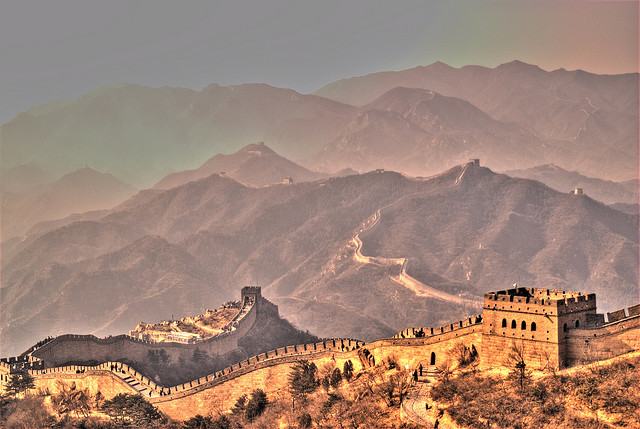
Mutianyu Section of the Great Wall of China
Mutianyu is a section of the Great Wall of China located in Huairou District within the city limits of Beijing 70 kilometres northeast of the center of the city. The Mutianyu section of the Great Wall is connected with Jiankou in the west and Lianhuachi in the east.
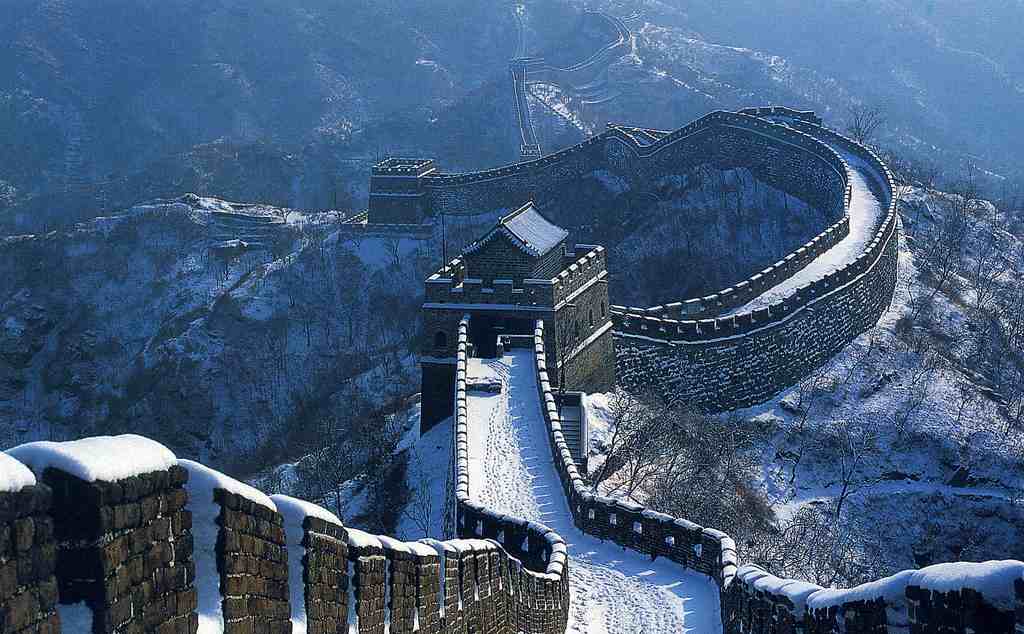
Juyongguan Section of the Great Wall of China
Juyongguan (Juyong Pass) Great Wall is one of the three most famous passes along the Great Wall of China, together with Jiayuguan and Shanhaiguan.
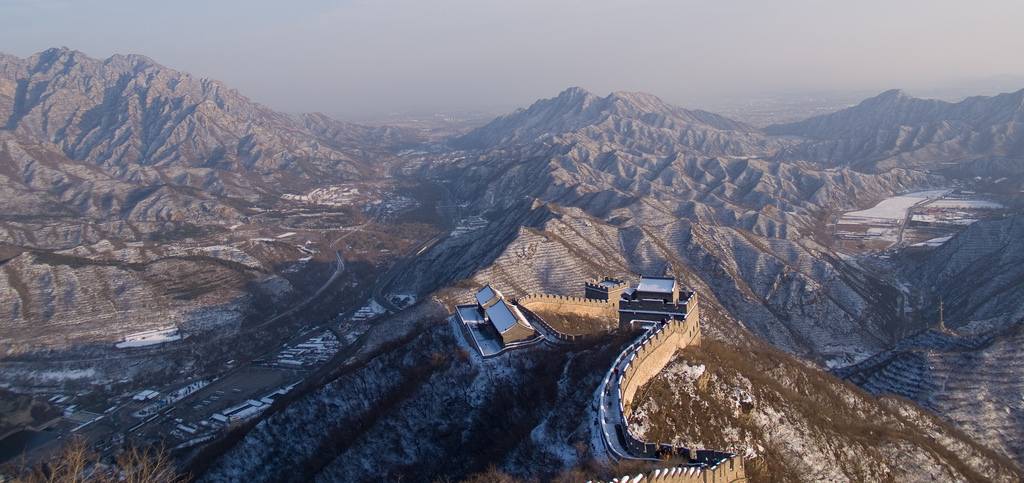
Simatai Section of the Great Wall of China
Simatai is located in the north of Miyun County, 120 km northeast of Beijing, holds the access to Gubeikou, a strategic pass in the eastern part of the Great Wall. It was closed in June 2010 but has been reopened to tourists in 2014.
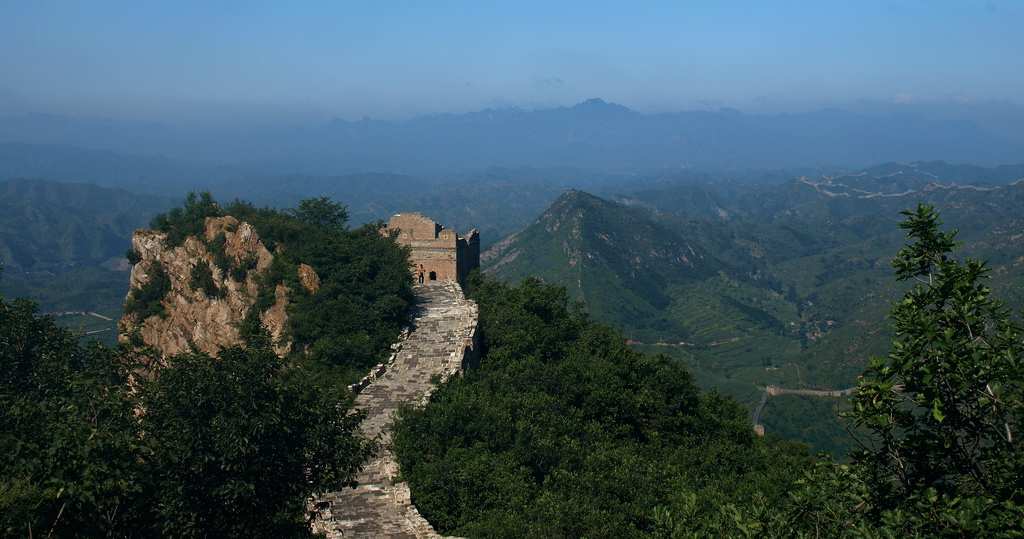
Jinshanling Section of the Great Wall of China
Jinshanling is a section of the Great Wall of China located in the mountainous area in Luanping County, Hebei Province, 125 km northeast of Beijing. This section of the wall is connected with the Simatai section to the east. Some distance to the west lies the Mutianyu section.
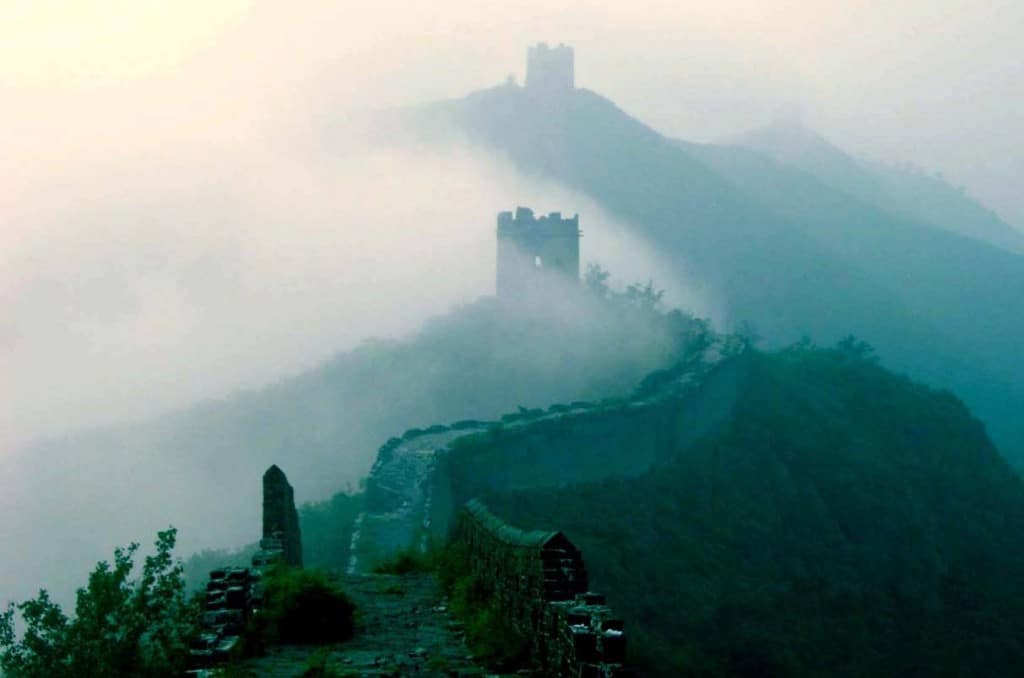
Jiankou section of the Great Wall of China
Jiankou Great Wall is one of the most dangerous and wild Great Wall sections. It is also the most photographed section due to its precipitous mountains, unique construction style, and attractive scenery.
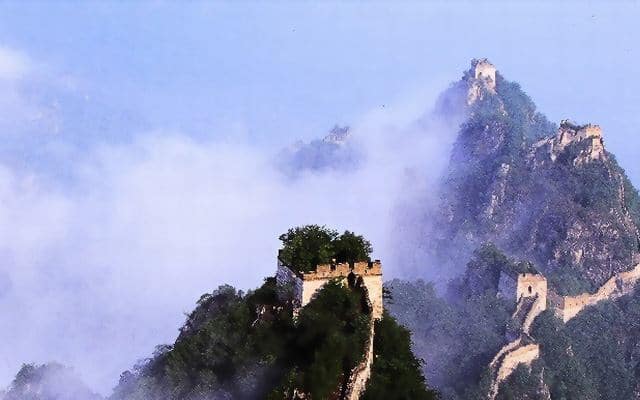
Conclusion | The Great Wall of China
It may not be visible from space, but as Nixon said, you would have to conclude that this is a great wall!
To truly appreciate the beauty and majesty of such a huge engineering marvel, you really need to visit the Great Wall for yourself. It’s only when you’ve exhausted yourself climbing an unbelievably steep set of stairs or seen the wall stretch as far as the eye can see that you find yourself scratching your head.
The fact that The Great Wall even exists is amazing.
But I guess that’s why it’s such an iconic part of China’s history and modern culture. It truly is a “Great Wall”.

